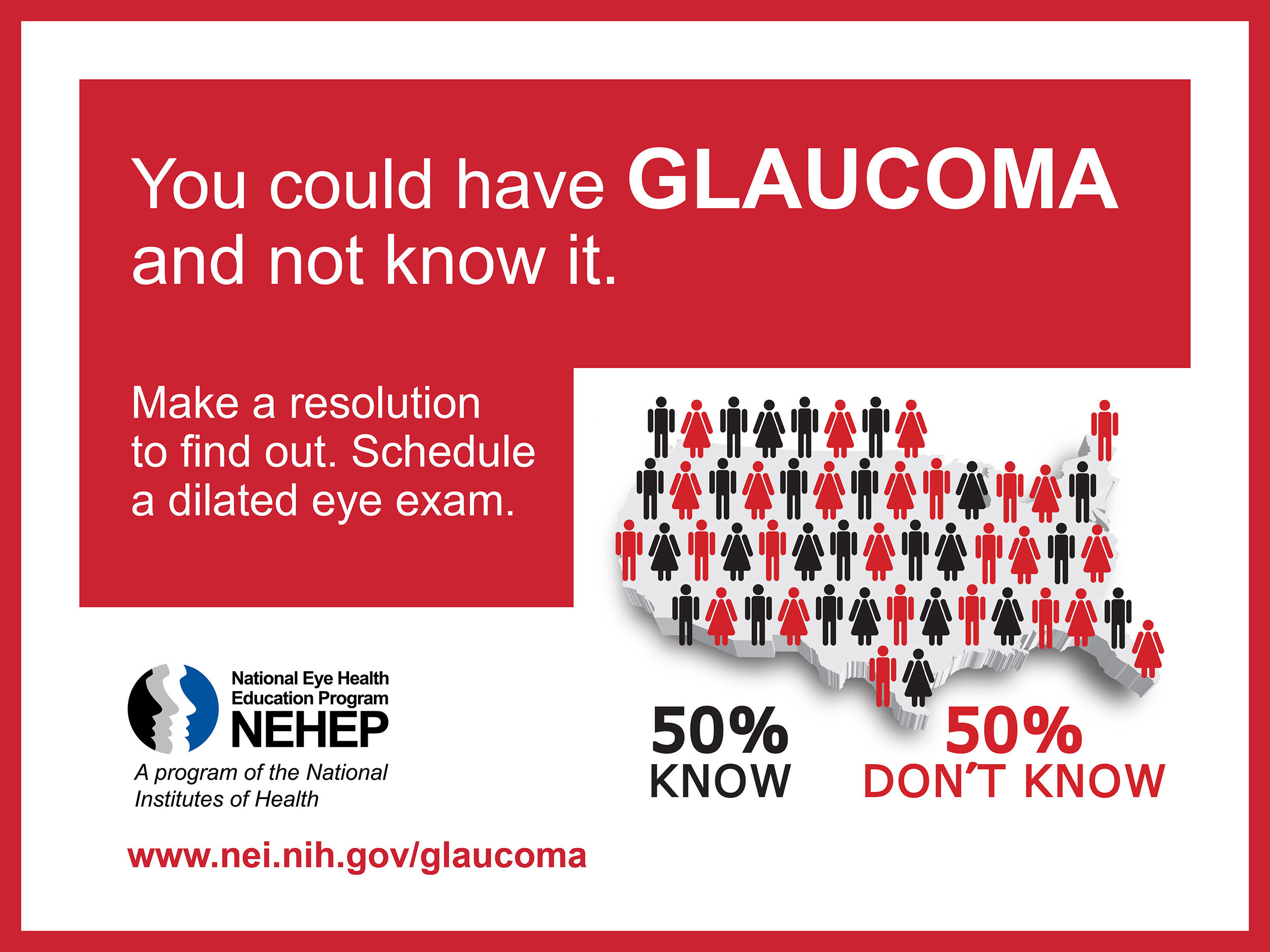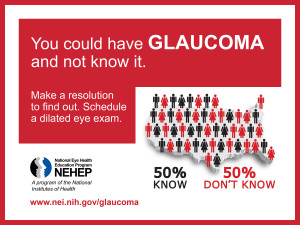
Do You REALLY Know What Glaucoma Is?
 January has been designated as National Glaucoma Awareness Month by health organizations to raise awareness of that disease that affects nearly 3 million people ages 40 and older according to a report by Prevent Blindness. You’ve probably heard glaucoma being talked about, but do you REALLY know what it is and how it could affect your eye health?
January has been designated as National Glaucoma Awareness Month by health organizations to raise awareness of that disease that affects nearly 3 million people ages 40 and older according to a report by Prevent Blindness. You’ve probably heard glaucoma being talked about, but do you REALLY know what it is and how it could affect your eye health?
The disease has been referred to as the “sneak thief of sight” because it can lead to complete blindness if not treated properly and early on. Symptoms of the two types of glaucoma symptoms may be difficult to detect, and that’s why it’s important to recognize warning signs and know when to visit an optometrist for more help and information.
Primary Open Angle Glaucoma is the least likely form of this disease to show dramatic symptoms. Those suffering from this type of glaucoma may experience the following:
Loss of peripheral vision: Not being able to see objects on your sides well when looking straight ahead. In advanced stages of the disease, your vision will seem “blacked out” or like wearing blinders on either side, which is called tunnel vision.
Generally, this vision loss is very gradual. It can sometimes go completely unnoticed. Some may attribute the vision loss to old age, and that’s why regular eye examinations are extremely important.
Acute Angle Closure Glaucoma can have more obvious symptoms, but it may be difficult to attribute them to developing glaucoma. Symptoms include:
- Nausea: It’s especially difficult to tell if this sickness is caused by an eye problem.
- Vomiting (brought on by severe eye pain): The pain may be so intense that it triggers vomiting.
- Blurred vision: In acute angle closure glaucoma, your vision will worsen and objects that used to look clear may now appear blurry.
- Seeing halos (glare): Driving at night may become difficult because of increased glare and halos (the glare that surrounds headlights or other lights at night).
- Eye redness: Your eyes may appear red and will probably start to feel uncomfortable.
If you are showing any of these signs of glaucoma, please call your eye doctor immediately for a comprehensive eye exam. You don’t want to wait. Symptoms of glaucoma usually don’t appear until the advanced stages of the disease. Getting annual eye exams is your best line of defense against this disease.
Have more questions about glaucoma and wondering if you could be at risk? Use National Glaucoma Awareness Month as motivation, and ask your optometrist at your closest Eyeglass World to learn more.
